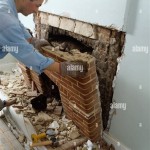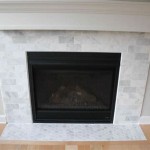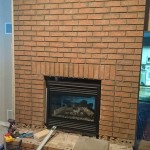Bats in Fireplace Chimney: A Comprehensive Guide
The discovery of bats residing within a fireplace chimney can be a disconcerting experience for homeowners. While these creatures play a vital role in the ecosystem, their presence inside a residence can pose several challenges, from noise and odor to potential health risks. Understanding the reasons behind bat occupancy, identifying signs of infestation, and implementing humane and effective removal strategies are crucial for resolving this issue. This article provides a comprehensive overview of dealing with bats in a fireplace chimney.
Bats seek shelter in various locations, and chimneys provide an attractive habitat due to their dark, enclosed spaces and relative protection from the elements. The rough interior surface of the flue allows bats to cling easily, and the opening at the top provides access to the outside world. Furthermore, chimneys often retain heat, especially during colder months, which can be appealing to bats seeking a warm roosting site. It's essential to understand that bats are protected in many jurisdictions, so any removal efforts must adhere to local laws and regulations.
Why Bats Choose Chimneys
Several factors contribute to why bats find fireplace chimneys appealing. The internal environment of a chimney offers a secure and stable climate, shielded from predators and extreme weather conditions. The darkness within the flue mimics the preferred roosting environments of many bat species, such as caves or tree hollows. The chimney's structure also allows bats to easily navigate and maneuver within a confined space. Additionally, chimneys are often located near structures where insects, a primary food source for bats, congregate, providing a convenient foraging ground.
The availability of suitable roosting sites is a major driver of bat populations in urban and suburban areas. As natural habitats diminish, bats adapt by utilizing man-made structures like chimneys. The gradual deterioration of chimney infrastructure, such as cracks or missing mortar, can also create entry points that bats readily exploit. It is important to note that bat maternity colonies are often established in chimneys, particularly during the spring and summer months, as they provide a safe and warm environment for raising young.
Identifying the Presence of Bats
Detecting a bat infestation in a chimney involves recognizing specific signs that indicate their presence. One of the most common indicators is the presence of bat droppings, known as guano, near the base of the fireplace or in the firebox. Guano is typically small, dark, and crumbly, resembling rodent droppings. However, guano tends to disintegrate more easily and may contain shiny insect remains. Another sign is a distinctive musky odor emanating from the fireplace, which is produced by the accumulation of guano and bat urine.
Audible cues can also indicate bat occupancy. Bats are nocturnal creatures, so scratching, fluttering, or squeaking sounds coming from the chimney during the evening or early morning hours are strong indicators of their presence. In some cases, bats may accidentally enter the living space from the chimney, especially if the damper is not properly sealed. Visual confirmation of bats flying in or out of the chimney opening during dusk is another definitive sign.
Humane Bat Removal Strategies
The most effective and ethical approach to removing bats from a chimney is through exclusion methods, which allow bats to exit the structure but prevent them from re-entering. This generally involves installing a one-way exclusion device over the chimney flue. These devices typically consist of a mesh tube or cone that allows bats to fly out but collapses or closes, preventing them from flying back in. Exclusion should be timed carefully to avoid trapping young bats inside the chimney, which could lead to their death and create further problems.
Before installing an exclusion device, it is essential to seal any other potential entry points into the building, such as cracks in the walls or gaps around windows. This ensures that the bats are forced to exit through the chimney and cannot find alternative routes back inside. Professional wildlife removal services often employ infrared cameras to identify all possible entry points effectively. Once the bats have been successfully excluded, the chimney should be thoroughly cleaned to remove guano and nesting materials. This process is crucial for eliminating odors and preventing the spread of diseases. It is recommended that a professional with specialized equipment and protective gear performs the cleaning.
It is critical to reiterate that attempting to poison, trap, or kill bats is not only inhumane but also often illegal. Many bat species are protected under federal and state laws, and harming them can result in significant fines and penalties. Furthermore, these methods can be ineffective and pose risks to human health through the handling of dead animals. Humane exclusion techniques are the most responsible and sustainable solution for resolving bat infestations in chimneys.

Got Bats In Your Chimney Flue Full Service

Bats In The Chimney How To Get Out Of

Bats In The Chimney What To Do Living Cavity

Bats In The Chimney How To Get Rid Of Remove

Are Those Birds Or Bats In My Chimney Tullahoma Tn A 1

La Z Boy Gulf Coast Designers Design Blog Marks Interiors

Got Bats In Your Chimney Flue Full Service

Got Bats In Your Chimney Flue Full Service

What To Do About Bats In The Chimney

What To Do About Bats In The Chimney
Related Posts








